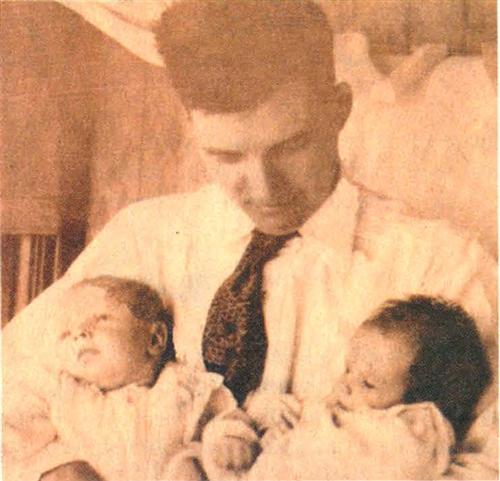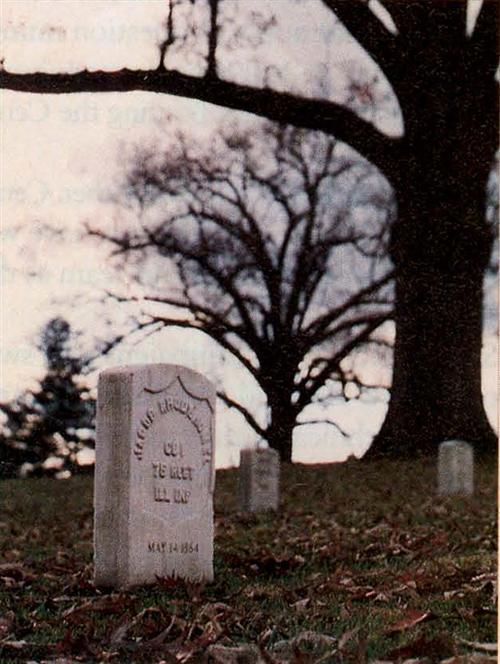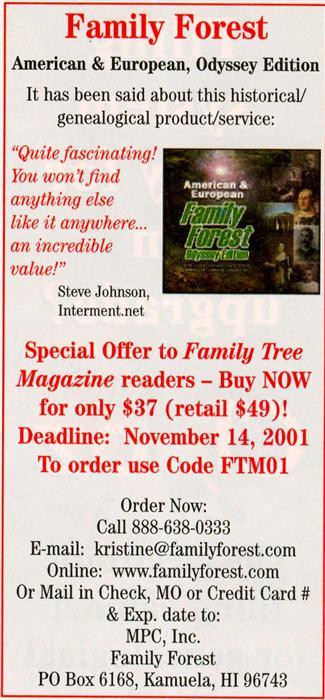Sign up for the Family Tree Newsletter Plus, you’ll receive our 10 Essential Genealogy Research Forms PDF as a special thank you!
Get Your Free Genealogy Forms
"*" indicates required fields
Bonus Baby
My mother’s family tree doesn’t show an overabundance of one sex of offspring over the other. However, when it came my grandma’s turn to have her family, she gave birth only to boys. After receiving four wonderful blessings of the male persuasion, she and Grandpa thought that was as large as their family would be. Grandma was disappointed she wouldn’t mother any girls, but was happy to have her family of tall, brawny boys. Harder to accept was another pregnancy at age 38 — back in 1921, considered an advanced age for a woman to give birth. Grandma worried, not only about her age, but about the fact that this pregnancy seemed so different from the others, though she couldn’t quite put her finger on why. Her doctor didn’t find anything out of the ordinary to worry about.
Then came time for the actual birth. My mother came into the world, and Grandma was thrilled she had her girl at last. “Wait,” the doctor said after the girl was born. “Another baby is coming!” This was a surprise, but it explained why Grandma felt this pregnancy had been so different. And now, she thought, not only would she get the daughter she’d longed for, but she’d have two daughters! “Put a string to mark the second one so we don’t get the two confused,” Grandma told the doctor. “I want to know which one was born first.” “Don’t worry, this one already has a mark on … him,” the doctor replied. Grandma always said she was thankful to have a daughter at last, even if she did have to take another son with her.
KATHI ADAMS
Bloomington, Ind.
A Truly Tangled Family Tree
Here’s how I came to be my own third cousin once removed. In the 1830s, there were two brothers born in Romania, Pesach and Yitzhak Clar. They each married and had offspring. Their offspring all came to the United States. Brother Yitzhak married and had a daughter Pauline. She married and had a daughter Rebecca and a son Irving. Rebecca married and had six children, one of whom was a daughter Rose.
Meanwhile, brother Pesach married and had six children, among whom was a son Morris, who inexplicably changed his last name from Clar to Mar. Morris married and had a son Philip and two daughters. Morris’ son Philip married Rebecca’s daughter Rose. Philip and Rose are therefore second cousins once removed. They had me and two other children. My mother is therefore my third cousin and my father is my second cousin twice removed. Since I am a branch on both Yitzhak’s and his brother Pesach’s family tree, I am my own third cousin once removed. My son is my fourth cousin. My son’s son is his fifth cousin and my fourth cousin once removed, and on and on.
To make matters more confusing, when my grandmother Regina died, her husband, Morris Mar, married his late first wife’s sister-in-law. The sister-in-law was my great-aunt and, upon her marriage to Grandfather Morris, also became my step-grandmother. Inbreeding can get very confusing.
NORMAN KLAT
Springfield, Va.
The Phantom Census Menace
Future British family history researchers may be puzzled by their early-21st-century ancestors’ entry under “religion” on the UK census: “Jedi.” According to the CNET news service, a recent e-mail stunt urged Brits to declare themselves members of the “religion” from the Star Wars movies. If enough people wrote “Jedi” on their census forms, the e-mails promised, the Office of National Statis-tics would have to officially recognize faith in “the Force” as a religion. “And remember,” the e-mails added, “if you are a member of the Jedi religion then you are by default a ‘Jedi Knight.’”
BURIED TRUTH
According to the obituary in the Gospel Herald about Sgt. Jacob Rhodehamel, 75th Illinois, Company I, he was buried on the field where he’d fallen in the Battle of Resaca in Georgia. When I read in a travel guide that there was a Civil War cemetery adjacent to the battle grounds in Resaca, I figured I’d find him there — not exactly where he’d fallen, but close enough.
Alas, when I arrived in Resaca, Ga., I discovered the cemetery was purely for Confederate soldiers. It was established by two spinster sisters who were appalled that the fighting and death had messed up their flower gardens. Their and they had the slaves re-inter bodies and bury their own dead boys in marked graves — not a Yankee in sight.
After tromping around this cemetery, I concluded that Rhodehamel might in- deed be buried where he’d fallen, maybe along the road or adjacent to a farmer’s field. I even checked with the county recorder’s office, to no avail. I decided it was a dead end, at least for now.
A few years later, I traveled to Acworth, Ga., to see my sister’s new home. En route back north, I needed a break and noticed there was a national cemetery in Chattanooga, Tenn. That was about the right distance, so I stopped there. I noticed across the road a group of mounted books listing all the grave sites. I’ve always been fascinated with cemeteries and couldn’t walk past without looking up someone. Jacob Rhodehamel was the only soldier whose name came to mind.
Of course you know the ending: His grave was listed under R. The search that had begun two years before ended with a longer stop than planned. I located his headstone — all the information was exactly correct. I took a whole roll of film, and wished I had stuff to do tracings with me in the car. Later I learned that Chattanooga was the staging arena for the operations at the battle of Resaca, and bodies were removed back of the line for burial.
MARILYN WITKO ROSINSKI
Penysburg, Ohio
everything’s relative
Alas for would-be Jedi Knights, a representative of the UK’s Office of National Statistics said, “There won’t be any coding for Jedi. So it won’t be called a religion even if 10,000 people do it.” The spokesperson added, “We’re encouraging people to take (the census) seriously, but we can’t stop them putting ‘Jedi.’”
Completion of the census form is mandatory under a 1920 British law, and those who give false information can be fined. But this penalty does not apply to question number 10, “Religion,” so Jedi Knight wannabes are merely wasting time, not flouting the Census Act.
It’s not an entirely new idea, either. Census officials said that avid soccer fans have written in the name of their favorite team as their “religion.”
Similar Jedi e-mail campaigns also swept through New Zealand and Australia earlier this year. Technically, citizens in both countries could get into more trouble than British Star Wars zealots. New Zealand officials simply opted to ignore the scheme. But the chief of the Australian Bureau of Statistics, John Struik, initially threatened Jedi religionists with a $1,000 fine.
Ultimately, Struik felt the Force, too, and backed off his threat. He even conceded, “It provides a bit of amusement, and people learn about the census.”
Or, as Jedi Master Yoda would say, “Amusing it is. Learn about the census they do.”
Grave Missions
My mother’s mother passed away in 1909 in Louisiana, when her children were 6, 4 and nearly 2 years old. My mother’s father was killed less than five years later in St. Louis by a train. The children were totally orphaned and grew up, first, with their maternal grandmother in northeastern Arkansas and then with their paternal grandmother in north-central Missouri.
Their only memories of their mother’s burial in Louisiana were the red dirt at the graveside, the fact that the cemetery was on a hilltop, and a recollection of crossing a low water bridge, with alligators on the sides, to get to the cemetery.
In the late 1970s, we took my mother to Louisiana to find this cemetery. With only those memories to go on, we found a man who took us to the only hill in the entire parish with a cemetery and also the only place that had any red dirt. It overlooked a bayou with a low water crossing to the cemetery road. The cemetery had been long abandoned, with weeds over our heads, but my mother felt that this was the right place and was happy to have been able to go back. We didn’t find any tombstone, as it was too weedy to look much.
Following the cemetery excursion, we then took her to northeastern Arkansas to find the graves of her maternal grandparents. Neither had a tombstone, but a cousin took us to the cemetery and knew which of the fieldstone-marked graves were the grandparents. This, again, was enough to make my mother happy.
The next February, my mother passed away from a heart attack.
Twenty years later, I had the chance to revisit the cemetery in northeastern Arkansas. To my dismay, I couldn’t tell which were the proper fieldstones for my great-grandparents. My intentions were to mark them properly, but no one could tell me the correct graves. My mother’s cousin who knew the location had also passed away.
The following year, I attended the annual “Homecoming” at this church and cemetery. It was a warm but gray cloudy day in June. As I walked into the cemetery to once again attempt to find these stones, a ray of sunshine came through the clouds and totally illuminated two large field rocks in a row of graves marked with fieldstones. I immediately recognized these two spotlit stones as the ones I had seen years before and then couldn’t find again later.
Much as my mother had 20 years before, I just accepted this find as a gift and was thankful. Some things, I decided, are just meant to be.
BETTY GAINES BROOKS
Horseshoe Bend, Ark.
Got an amusing or unusual family history story to share? We’ll pay $25 for every item we use. Send to: Everything’s Relative, Family Tree Magazine, 1507 Dana Ave., Cincinnati, OH 45207, or e-mail to FTMrelative@fwpubs.com. Sorry, we can’t return or acknowledge submissions.

ADVERTISEMENT






